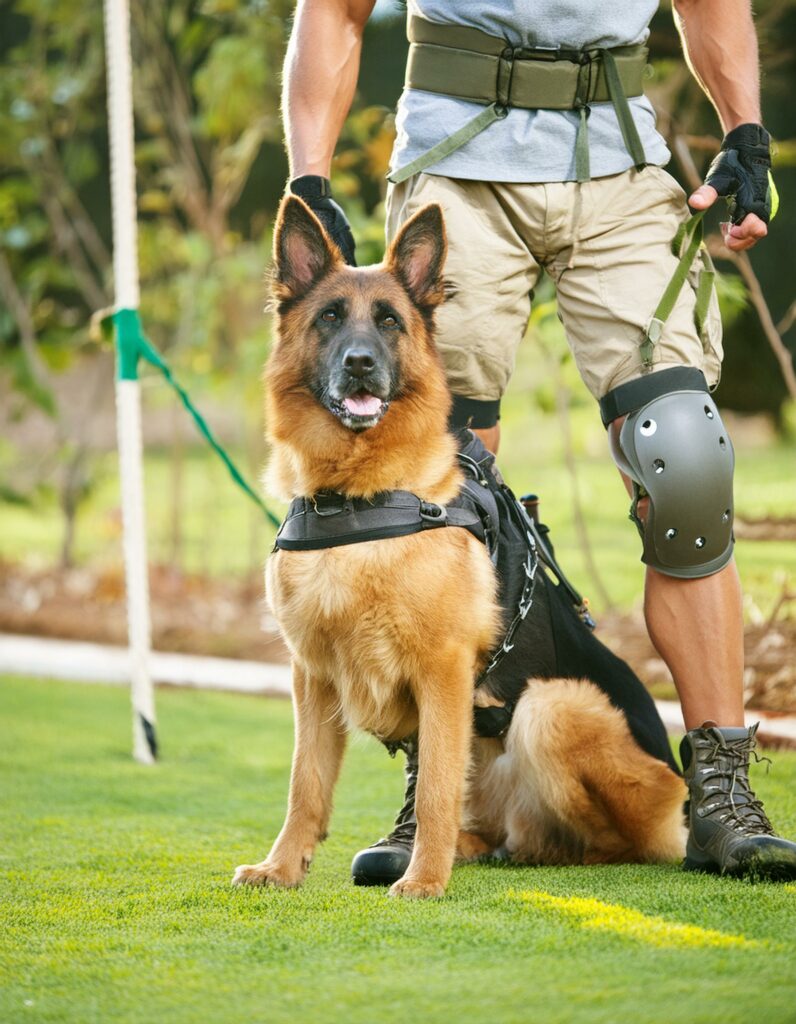German Shepherds are one of the most recognized and versatile dog breeds globally, known for their loyalty, intelligence, and adaptability. These traits make them excellent for various roles, from family companions to professional working dogs. In this guide, we will explore the different breeds of German Shepherds, focusing on the distinct characteristics of the working and show lines, to help you decide which is the best fit for your needs and lifestyle.
History of German Shepherds
The German Shepherd breed was officially established in Germany in the early 20th century, developed primarily for herding and guarding sheep. Max von Stephanitz, the founder of the breed, aimed to standardize a dog breed that was not only aesthetically pleasing but also highly functional. This breed quickly became popular across the world for its intelligence, strength, and versatility, adapting to roles beyond herding, such as police work, search and rescue, and as service dogs.
Characteristics of German Shepherds
German Shepherds are large-sized dogs with a well-proportioned build, known for their keen intelligence and strong work ethic. They typically exhibit confidence and fearlessness, balanced with a loyal and protective nature. This breed is highly trainable, due to its natural curiosity and eagerness to learn new tasks, which makes them excellent candidates for various demanding roles in working environments as well as loving family pets.
The Different Lines of German Shepherds

Understanding the distinctions between the working line and show line German Shepherds is crucial when choosing a dog that best fits your lifestyle and expectations. Each line has been bred with specific traits and purposes in mind, influencing their physical appearance, temperament, and suitability for different tasks or environments.
Working Line German Shepherds
Working line German Shepherds are bred primarily for their performance and utility in work-related capacities.
These dogs are characterized by their high energy levels, strong drive, and remarkable endurance. They are typically leaner and more agile than their show line counterparts, with a darker and denser coat. Ideal for roles in law enforcement, military work, and search and rescue, working line German Shepherds are resilient and thrive in active, high-stakes environments.
Show Line German Shepherds
Show line German Shepherds, on the other hand, are bred with a focus on conformance to breed standards set by various kennel clubs. These standards emphasize specific physical traits, such as the angle of the hips, the length of the coat, and overall demeanor. Show line German Shepherds tend to have a more calm and manageable temperament, making them excellent choices for families and for show competition. They are known for their striking appearance and graceful movements.
Factors to Consider When Choosing a German Shepherd
Selecting the right German Shepherd for your home or work environment involves several considerations. Understanding the breed’s temperament, health, and energy levels are key to ensuring a good match.
Temperament
The temperament of a German Shepherd can vary significantly between the working and show lines. While both lines are generally intelligent and capable, the working line’s temperament is geared towards high-energy tasks and can be too intense for a typical family setting. In contrast, show lines are often more relaxed and better suited for companionship and family life.
Health
German Shepherds are prone to certain health issues, such as hip dysplasia, elbow dysplasia, and other genetic disorders. Prospective owners should prioritize finding reputable breeders who perform genetic testing on their breeding stock to reduce the risk of these conditions.
Energy Level
The energy level of a German Shepherd is a crucial factor in determining its suitability for different lifestyles. Working line dogs require a lot of exercise and mental stimulation, making them ideal for active individuals or families, or for professional roles that utilize their energy and drive. Show line dogs, while still energetic, often adapt more easily to less active environments.
Best Breed for Specific Needs
Choosing the best German Shepherd breed depends significantly on your personal circumstances and what you expect from your dog.
Best for Families
For families, show line German Shepherds are typically the best option. They are generally more adaptable to a variety of home environments and have a temperament that is easier to manage around children and other pets.
Best for Work
If you are looking for a dog to perform specific tasks, such as in police work, rescue operations, or as a service animal, a working line German Shepherd is more appropriate. Their stamina, drive, and resilience make them excellent in professional working roles.

Caring for Your German Shepherd
Regardless of the line, German Shepherds require dedicated care, including regular exercise, a healthy diet, and mental stimulation.
Training Tips
Training should start early, particularly with German Shepherds, due to their high intelligence and energy. Positive reinforcement methods work best, promoting a trusting relationship and encouraging good behavior.
Diet and Nutrition
A balanced diet is crucial for keeping your German Shepherd healthy. High-quality commercial dog food or a well-balanced homemade diet suited to their age, size, and energy level is recommended.
Health and Veterinary Care
Routine veterinary care is vital to manage common breed-specific health issues. Regular check-ups can help prevent and treat conditions that are typical in German Shepherds, such as joint problems and allergies.
Conclusion
The best breed of German Shepherd for you depends on whether you value a dog’s ability in work-related roles or prefer a companion animal suitable for family life. By understanding the differences between the working and show lines, you can choose a dog that best fits your lifestyle and meets your expectations.
